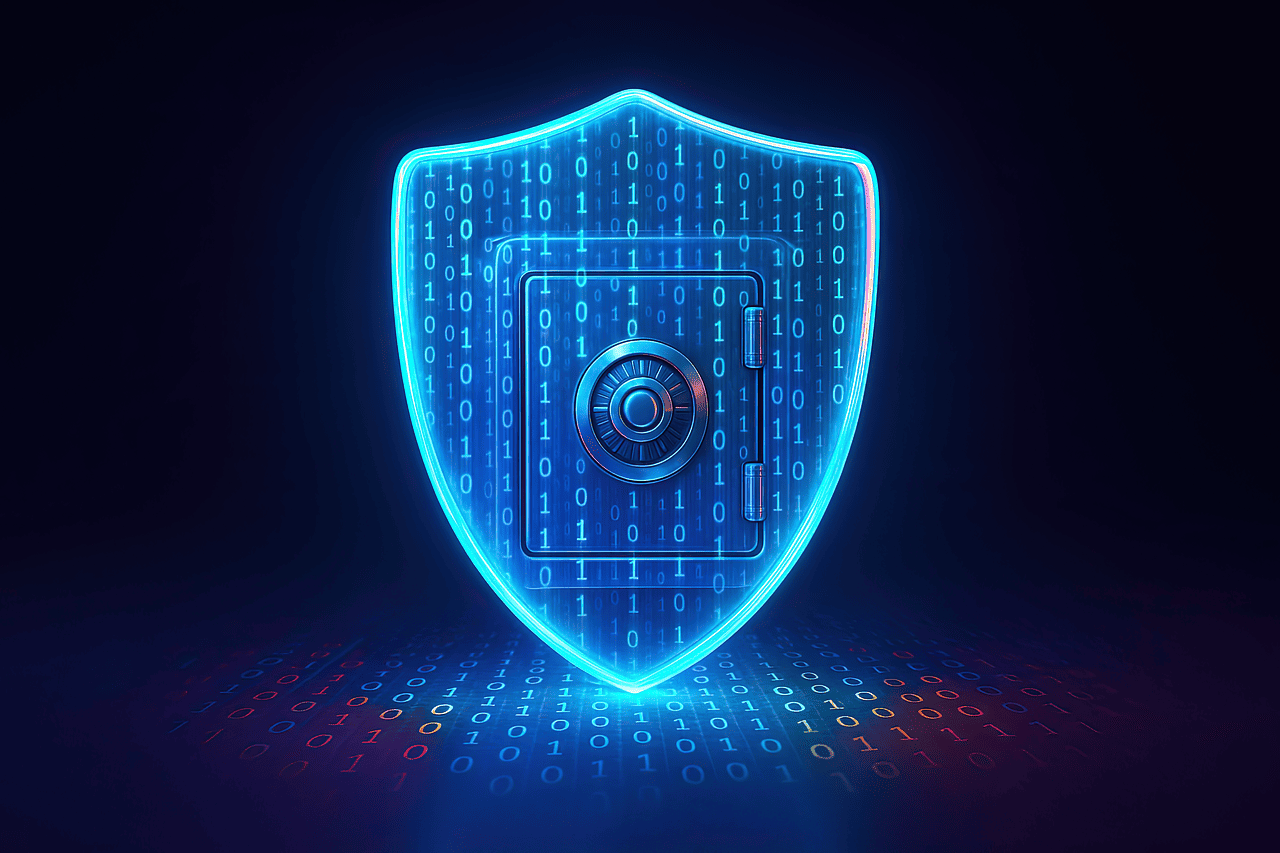In this post, I will outline 7 ways AI-driven threat hunting surpasses traditional detection methods.
Cybersecurity teams face an uncomfortable reality: hackers are becoming increasingly sophisticated, attacks are evolving, and traditional security tools are struggling to keep pace.
While signature-based antivirus and rule-based firewalls were effective in the past, today’s cyber threats require something more intelligent. That’s where AI-driven threat hunting changes the game completely.
When security professionals leverage AI chat systems to learn about emerging threats, they’re tapping into technology that thinks like an attacker but works for the defender.
Let’s examine how artificial intelligence is revolutionizing threat detection and why traditional methods are becoming increasingly obsolete.
Table of Contents
Understanding AI-Driven Threat Hunting vs Traditional Detection
What Is Traditional Threat Detection?
Traditional cybersecurity relies on known patterns:
- Signature matching – Looking for exact malware fingerprints
- Rule-based alerts – If X happens, then flag it
- Perimeter defense – Building walls around networks
- Manual log reviews – Humans checking system records
These methods work like a bouncer checking a list of banned people at the door. If someone’s not on the list, they get in.
What Makes AI Threat Hunting Different?
AI-driven threat hunting actively searches for threats instead of waiting for them to announce themselves. When you ask AI about network anomalies, it analyzes millions of data points simultaneously, finding threats that don’t match any known signature.
Think of it like having a detective who notices when someone acts suspiciously, even if they’ve never committed a crime before. ChatGPT alternatives for cybersecurity can spot behavioral patterns that humans would miss in mountains of data.
The 7 Game-Changing Advantages of AI Threat Hunting
1. Real-Time Pattern Recognition Across Massive Data Sets
The Problem with Traditional Methods
Security teams drown in data. A medium-sized company generates millions of log entries daily. Manual review? Impossible. Traditional tools? They only flag what they’re programmed to flag.
How AI Changes Everything
AI processes unlimited data streams simultaneously:
- Analyzes network traffic patterns in milliseconds
- Correlates user behaviors across all systems
- Identifies subtle anomalies humans can’t see
- Learns normal patterns for your specific environment
Real Example: An AI system noticed an employee account accessing servers at 3 AM from two different countries simultaneously. Traditional tools saw valid credentials and did nothing. AI recognized the impossibility and prevented a major breach.
2. Zero-Day Attack Detection Without Signatures
The Traditional Weakness
Signature-based detection only catches known threats. New malware variants slip through undetected until security companies create and distribute new signatures – often days or weeks after initial attacks.
The AI Advantage
Machine learning identifies malicious behavior, not signatures:
Behavioral Indicators AI Monitors:
- Unusual file modifications
- Abnormal network connections
- Suspicious process executions
- Encryption activity patterns
- Memory manipulation attempts
When hackers create brand-new malware, AI recognizes the malicious behavior immediately. You can ask AI chat platforms to explain why certain activities seem suspicious, getting instant threat intelligence.
3. Predictive Threat Intelligence
Traditional: Reactive Only
Old-school security waits for attacks to happen, then responds. By then, damage is often done.
AI: Proactive Prevention
Artificial intelligence predicts attacks before they occur by analyzing:
- Current vulnerability trends
- Industry-specific threat patterns
- Geopolitical events affecting cyber activity
- Your organization’s specific weak points
- Historical attack data patterns
Practical Impact: AI might recognize that your industry faces increased ransomware attacks during holiday weekends and automatically strengthen defenses before long weekends.
4. Automated Response in Milliseconds
The Human Speed Problem
Traditional detection requires human intervention:
- Alert generates
- Human investigates (minutes to hours)
- Human decides on response
- Human implements fix
- Threat spreads during delay
AI’s Lightning Response
AI executes immediate containment:
Instant Actions AI Takes:
- Isolates infected machines immediately
- Revokes compromised credentials
- Blocks malicious IP addresses
- Quarantines suspicious files
- Initiates backup procedures
- Notifies security team with full context
By the time humans review the situation, AI has already contained the threat.
5. Continuous Learning and Adaptation
Static Rules vs Dynamic Intelligence
Traditional tools use fixed rules that become outdated quickly. Hackers study these rules and design attacks to bypass them.
AI’s Evolutionary Advantage
Machine learning systems improve constantly:
- Every detected threat becomes training data
- False positives teach better accuracy
- New attack techniques automatically update detection
- Global threat intelligence feeds enhance local learning
When security teams use ChatGPT alternatives to search for threat analysis, they benefit from knowledge gathered across millions of attacks worldwide.
6. Dramatic Reduction in False Positives
The Alert Fatigue Crisis
Traditional systems generate thousands of false alerts daily. Security teams become numb to alerts, potentially missing real threats among the noise.
AI’s Intelligent Filtering
Artificial intelligence understands context:
How AI Reduces False Positives:
- Learns normal behavior for each user
- Understands legitimate but unusual activities
- Correlates multiple signals before alerting
- Prioritizes alerts by actual risk level
- Provides context explaining why something matters
Result: 90% fewer false positives, allowing security teams to focus on real threats.
7. Cross-Platform Threat Correlation
Traditional Silos Miss Connected Attacks
Old tools operate independently:
- Email security doesn’t talk to network monitoring
- Endpoint protection doesn’t share with cloud security
- Each tool sees only part of the picture
AI’s Holistic View
AI creates unified visibility by connecting:
- Cloud and on-premise systems
- Email, web, and application layers
- User activities across all platforms
- Network traffic patterns
- Endpoint behaviors
Attack Chain Detection: AI might connect: suspicious email → user clicks link → malware downloads → lateral movement attempt → data exfiltration preparation. Traditional tools would see five separate, seemingly unrelated events.
Implementing AI Threat Hunting Successfully
Essential Requirements for AI Success
Data Foundation
- Comprehensive logging across all systems
- Standardized data formats
- Sufficient historical data for training
- Quality data storage infrastructure
Integration Planning
Before implementing AI threat hunting:
- Assess current security tool compatibility
- Plan API connections
- Design workflow integration
- Prepare incident response procedures
Choosing the Right AI Security Solution
Key Questions to Ask Vendors
When evaluating AI platforms, ask:
- How does the AI handle encrypted traffic?
- Can we ask AI specific questions about our environment?
- What’s the false positive rate?
- How are models updated?
- What automation capabilities exist?
Red Flags to Avoid
- Vendors who can’t explain their AI clearly
- No proof of concept option
- Lack of integration capabilities
- No human oversight options
Practical Steps to Start AI Threat Hunting
Phase 1: Foundation (Months 1-2)
- Audit current security tools
- Standardize logging practices
- Choose AI platform
- Begin pilot program
Phase 2: Integration (Months 2-4)
- Connect data sources
- Train AI on your environment
- Establish baselines
- Create response procedures
Phase 3: Optimization (Months 4-6)
- Fine-tune detection rules
- Reduce false positives
- Expand automation
- Measure improvements
Common Misconceptions About AI Security
“AI Replaces Security Teams”
Reality: AI augments human expertise. Security professionals still make strategic decisions, investigate complex incidents, and manage AI systems.
“AI Is Too Complex”
Reality: Modern AI chat interfaces make threat hunting accessible. Security teams can literally ask AI questions in plain English about their environment.
“AI Is Only for Large Enterprises”
Reality: ChatGPT alternatives and cloud-based AI security solutions make advanced threat hunting affordable for organizations of all sizes.
Measuring AI Threat Hunting Success
Key Metrics to Track
Detection Metrics
- Mean time to detection (MTTD)
- Number of zero-day threats caught
- False positive rate reduction
- Previously undetected threats discovered
Response Metrics
- Mean time to response (MTTR)
- Automated containment rate
- Incident investigation time
- Breach prevention rate
Business Impact
- Reduced security incidents
- Decreased downtime
- Lower incident response costs
- Improved compliance scores
The Future of AI in Cybersecurity
Emerging Capabilities
Next-generation AI threat hunting will feature:
- Conversational security interfaces (ask AI anything about your security)
- Predictive attack simulation
- Autonomous threat hunting
- Quantum-resistant algorithms
Preparing for Tomorrow
Organizations should:
- Build AI expertise within security teams
- Establish ethical AI guidelines
- Plan for increased automation
- Maintain human oversight capabilities
Best Practices for AI Threat Hunting
Do’s
- Start with clear objectives
- Ensure data quality
- Maintain human oversight
- Measure results consistently
- Update AI models regularly
Don’ts
- Don’t trust AI blindly
- Don’t skip the planning phase
- Don’t ignore false positives
- Don’t eliminate human analysts
- Don’t expect instant perfection
Conclusion – The AI Advantage Is Clear
The seven advantages of AI-driven threat hunting over traditional detection aren’t just incremental improvements – they’re transformative capabilities that fundamentally change how organizations defend themselves.
Traditional detection methods served us well in simpler times, but today’s threat landscape demands more. When security teams ask AI chat systems for help identifying threats, they’re accessing processing power and pattern recognition capabilities that surpass human limitations.
Organizations still relying solely on signature-based detection and manual analysis are fighting modern warfare with outdated weapons. The question isn’t whether to adopt AI threat hunting, but how quickly you can implement it effectively.
Start small, measure results, and expand gradually. Your security posture will transform from reactive to proactive, from overwhelmed to in control. In the battle against cyber threats, AI isn’t just an advantage – it’s becoming essential for survival.
INTERESTING POSTS
- From Draft To Renewal: Managing Every Stage With A Contract Management Tool
- The Role of Artificial Intelligence in Cybersecurity
- How AI Is Transforming Web Design: Tips to Stay Ahead in 2026
- AI-Driven Facial Analysis: Enhancing Portrait Composition and Framing
- Smart Security Systems and Motion Sensors: Debunking Common Myths and Misconceptions
- Why Is Cybersecurity In Financial Services Important?
About the Author:
Meet Angela Daniel, an esteemed cybersecurity expert and the Associate Editor at SecureBlitz. With a profound understanding of the digital security landscape, Angela is dedicated to sharing her wealth of knowledge with readers. Her insightful articles delve into the intricacies of cybersecurity, offering a beacon of understanding in the ever-evolving realm of online safety.
Angela's expertise is grounded in a passion for staying at the forefront of emerging threats and protective measures. Her commitment to empowering individuals and organizations with the tools and insights to safeguard their digital presence is unwavering.












